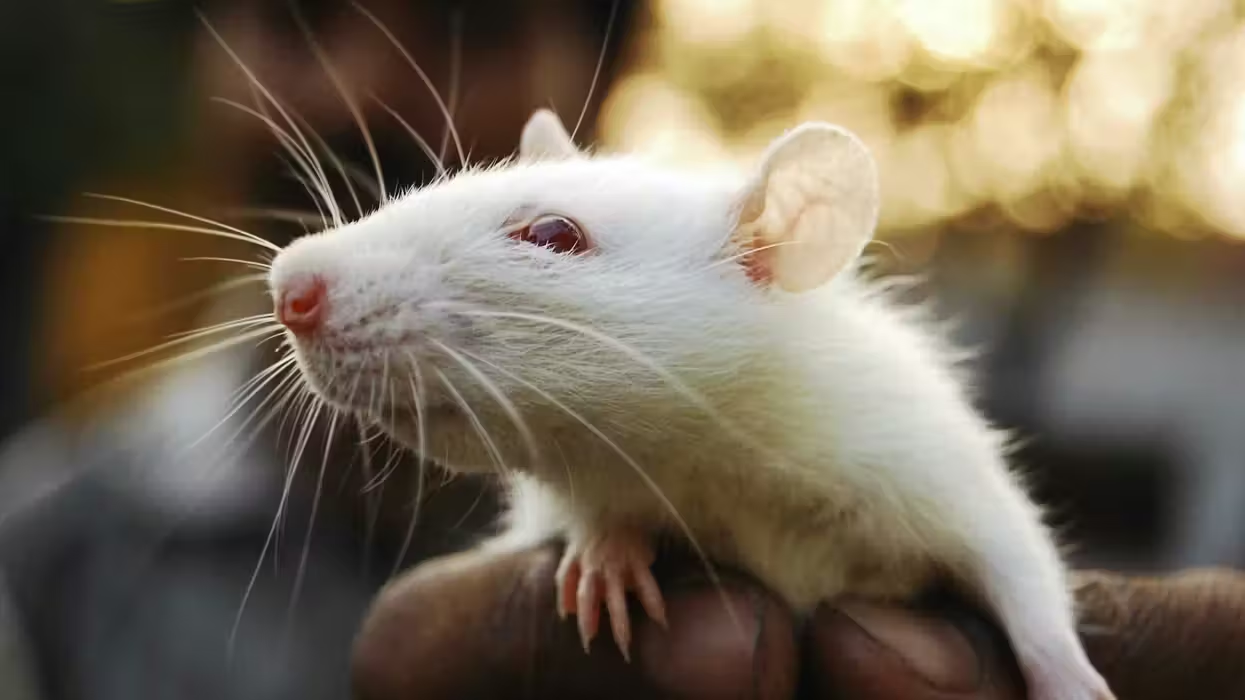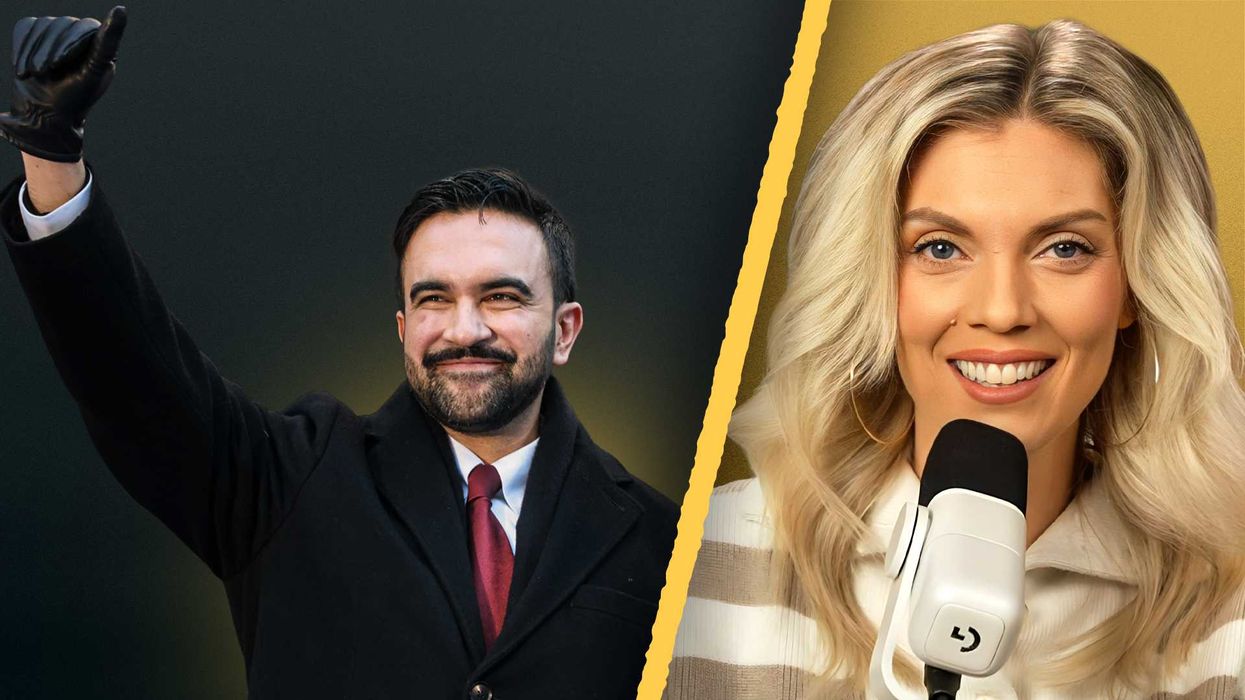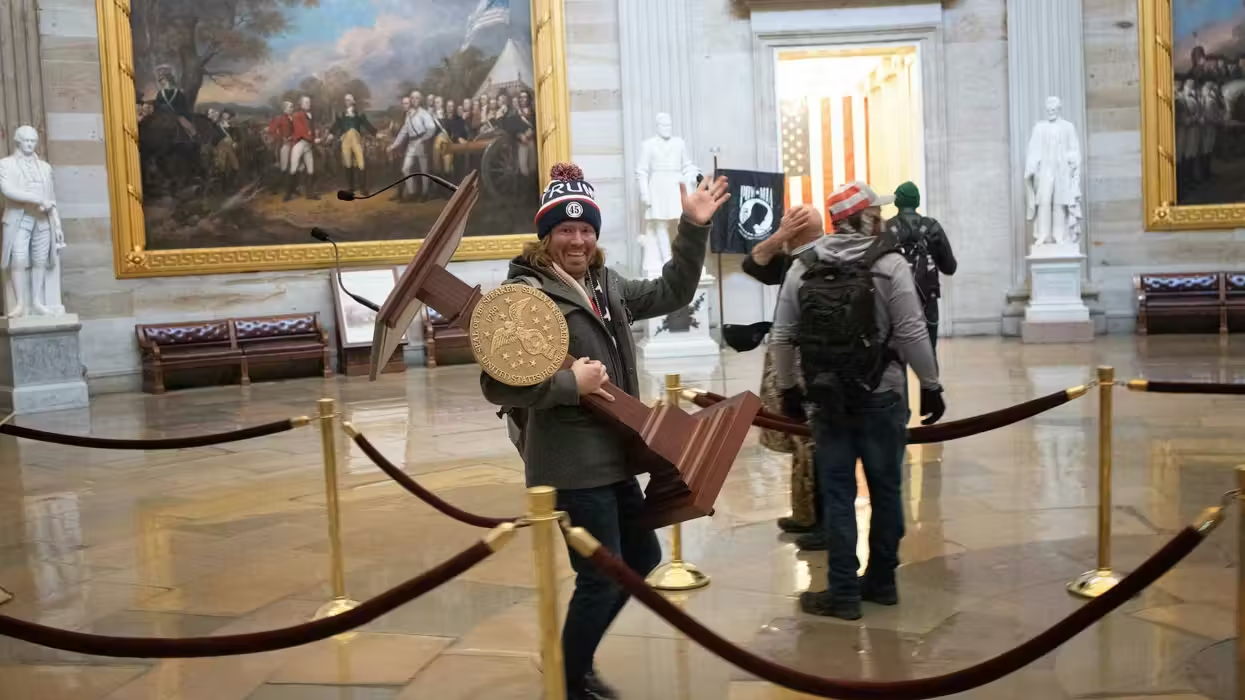
© 2026 Blaze Media LLC. All rights reserved.
What's Going on Behind the Scenes of Bombing Investigation? Forensic Scientist, Former DHS Official Shed Light on Tech and Tactics
April 18, 2013
Facial recontion. Biometic analysis. Data crunching. What part does tech play?
The FBI has set up hotlines for information. It is requesting all pictures or video from runners or spectators of the Boston Marathon that could hold relevant clues. And it's on the ground sifting through bits of rubble looking for any items that might lead it to the identity of the suspects who detonated two bombs Monday, killing three and injuring more than 170.
The FBI officially released photos of two men suspected of the bombing Thursday. But it took sifting through a massive amount of information to get to this point.
 Investigators in white jumpsuits work the crime scene on Boylston Street following yesterday's bomb attack at the Boston Marathon April 16, 2013 in Boston, Massachusetts. Security is tight in the City of Boston following yesterday's two bomb explosions near the finish line of the Boston Marathon, that killed three people and wounding hundreds more. (Photo: Darren McCollester/Getty Images)
Investigators in white jumpsuits work the crime scene on Boylston Street following yesterday's bomb attack at the Boston Marathon April 16, 2013 in Boston, Massachusetts. Security is tight in the City of Boston following yesterday's two bomb explosions near the finish line of the Boston Marathon, that killed three people and wounding hundreds more. (Photo: Darren McCollester/Getty Images)
Just what is going on behind the scenes of this investigation -- and what technology is being used -- to find the bombers? TheBlaze spoke with a forensic scientist and crime scene investigator and a former Department of Homeland Security official to get a better idea if the "CSI: Miami" scenes you might be picturing in your head are accurate in this case or not.
How to deal with a massive amount of civilian photos, video and tips?
The FBI and local investigators quickly began asking those at the marathon that day to send in tips of what they saw or to email video or photos of the area impacted by the explosion. No piece of information should be considered insignificant, they kept repeating.
With that, a slew of data flowed into their call centers and servers. The first step, which is still underway for incoming information, was to sort through it all.
George Schiro, a consulting forensic scientist at Forensic Science Resources, speculates investigators might be using some sort of software to sift through the information and get it to the appropriate investigator.
As for photos and video, programs analyzing meta data might be helping sort based on times that are most important for the investigators to evaluate.
With shows like CSI occasionally portraying futuristic analysis tools like facial recognition technology, one might assume it would be helpful in an investigation like that being led by the FBI in Boston. Schiro though said facial recognition is not likely to be a key player in this case.
"Facial recognition technology will play a very small part," Schiro told TheBlaze in a phone interview.
"A lot depends on the quality of the images you have to work with," Schiro continued noting that lighting, angle and other factors could really limit the use of facial recognition in the case. Not only that but there would need to be some sort of match for it to recognize.
Facial recognition could come into play when it comes to suspects. Using such a program with the face of a suspect, could help narrow down a database of images to a more limited, applicable stack.
Much of the work with images coming in though are most likely looked at by an analyst picture by picture and frame by frame.
What could bomb fragments and physical evidence hold?
We've all seen the photos of investigators clothed in white jumpsuits with gloves marking, noting and photographing potential evidence on the course in the explosion area. Schiro said the entire investigation would start at "ground zero" and go outward from there.
 FBI crime scene investigators photograph evidence after placing a marker on Boylston Street just past Berkeley Street April 17, 2013 in Boston, Massachusetts. Investigators continue to work the scene of two bomb explosions at the finish line of the marathon that killed 3 people and injured over one hundred more. (Photo: Darren McCollester/Getty Images)
FBI crime scene investigators photograph evidence after placing a marker on Boylston Street just past Berkeley Street April 17, 2013 in Boston, Massachusetts. Investigators continue to work the scene of two bomb explosions at the finish line of the marathon that killed 3 people and injured over one hundred more. (Photo: Darren McCollester/Getty Images)
Fragments from the bomb itself would be analyzed for biometric evidence.
"Heat from the blast will cook finger prints into the metal," Schiro said, if there are finger prints to be had.
He noted that fragments will be evaluated for any DNA evidence left behind as well.
Former DHS Assistant Secretary from 2003 through 2005, Robert Liscouski, who is now the director of Implant Science Corporation, told TheBlaze the fragments will also be analyzed for any sort of a "bomb signature." If investigators can find a brand, a serial number or anything to associate a specific type of product, like a battery, they might be able to figure out where it was bought, during what timeframe, and potentially find surveillance video or other information.
The backpacks the bombs were detonated in, for example, might have been found in shreds, but authorities were still able to find figure out manufacturer and style. This information can be used to match bags a suspect might be seen carrying.
Of the physical evidence on the scene is being analyzed and considered as evidence, Liscouski said the process is time-consuming because of the need to keep track of the "chain of custody" of such evidence in case it needs to be used in court. This chain of custody ensures the integrity of the evidence so it could not be questioned by a defense as being compromised.
 An FBI investigator, top, hands a bag to another investigator after walking down a fire truck ladder with it from a building top at the corner of Boylston Street and Fairfield Street , Wednesday, April 17, 2013, in Boston. Investigators in white jumpsuits fanned out across the streets, rooftops and awnings around the blast site in search of clues on Wednesday. (Photo: AP/Julio Cortez)
An FBI investigator, top, hands a bag to another investigator after walking down a fire truck ladder with it from a building top at the corner of Boylston Street and Fairfield Street , Wednesday, April 17, 2013, in Boston. Investigators in white jumpsuits fanned out across the streets, rooftops and awnings around the blast site in search of clues on Wednesday. (Photo: AP/Julio Cortez)
How much is there to sift through?
What's more, Liscouski pointed out the sheer scale of the physical evidence that needs to be evaluated and collected properly.
He said to consider the bodies of those injured as an example. There are more than 170 people he said who could hold some fragments of the explosives, which could be evidence for investigators. Then there are all the places -- high and low -- that pieces could have flown.
"People standing close to the device absorbed the most impact," Liscouski said, noting how finding a piece of a timer would be useful for the case.
If fragments are removed from a patient, Liscouski again called attention to how someone would be in the operating room to keep record of the chain of custody as the potential evidence was placed in a plastic bag.
As for video, Gene Grindstaff, a scientist at Intergraph Corp., a Huntsville, Ala., company that makes video analysis software, told the Associated Press there could be as much as 1 million hours of videotape from fixed security cameras and cellphones and cameras used by spectators.
Here's the surveillance footage released by the FBI showing the two men listed as suspects in the crime:
What about cellphone tracking and other monitoring?
TheBlaze has reported extensively about cellphone tracking. In this case, cellphone records are being evaluated to figure out who might have been in the area using a phone at the time of detonation. As TheBlaze has reported in the past, cellphone triangulation pinpoints a relative location of users based on the signal sent to a cell tower every few seconds.
Even though potentially helpful, TheBlaze's national security expert Buck Sexton said he expects it will be of limited utility in this case. Why? Because there were hundreds of people using cellphones in the area that would need to be evaluated.
If a cellphones wasn't what detonated the pressure cooker bomb, other devices that could have been used include a digital watch, garage door opener or a pager.
Monitoring movement of public transit and vehicles and seeking out license plate numbers is another measure that could be taken. Just last month, the NYPD announced that it would complete installing license plate readers to monitor all traffic coming into Manhattan over bridges.
An unnamed source also told Fox News they had monitored social media posts within a 1-mile radius and a 48-hour period surrounding the time of the blast to make connections as well.
Communication and making connections on an even broader scale, Schiro said, will ensure this investigation moves forward. Earlier this week, TheBlaze spoke with Oliver McGee -- a deputy assistant to the transportation security secretary where he received international and national security training under the Clinton administration -- who said federal agencies are evaluating and sharing both domestic and international intelligence.
What is being done the old-fashioned way?
Overall, TheBlaze found crime scene experts saying tech analysis tools might be taking a back seat to the old-fashioned expert eye.
 People in hazardous materials suits investigate the scene at the first bombing on Boylston Street in Boston Tuesday, April 16, 2013 near the finish line of the 2013 Boston Marathon, a day after two blasts killed three and injured over 170 people. The bombs that ripped through the Boston Marathon crowd were fashioned out of ordinary kitchen pressure cookers, packed with nails and other fiendishly lethal shrapnel, and hidden in duffel bags left on the ground, people close to the investigation said Tuesday. (Photo: AP/Elise Amendola)
People in hazardous materials suits investigate the scene at the first bombing on Boylston Street in Boston Tuesday, April 16, 2013 near the finish line of the 2013 Boston Marathon, a day after two blasts killed three and injured over 170 people. The bombs that ripped through the Boston Marathon crowd were fashioned out of ordinary kitchen pressure cookers, packed with nails and other fiendishly lethal shrapnel, and hidden in duffel bags left on the ground, people close to the investigation said Tuesday. (Photo: AP/Elise Amendola)
"They're still doing stuff very much like they used to do it," Liscouski said.
He called it a "hands and knees," "looking high and looking low," and "collecting everything" approach.
Want to leave a tip?
We answer to you. Help keep our content free of advertisers and big tech censorship by leaving a tip today.
Want to join the conversation?
Already a subscriber?
more stories
Sign up for the Blaze newsletter
By signing up, you agree to our Privacy Policy and Terms of Use, and agree to receive content that may sometimes include advertisements. You may opt out at any time.
Related Content
© 2026 Blaze Media LLC. All rights reserved.
Get the stories that matter most delivered directly to your inbox.
By signing up, you agree to our Privacy Policy and Terms of Use, and agree to receive content that may sometimes include advertisements. You may opt out at any time.





